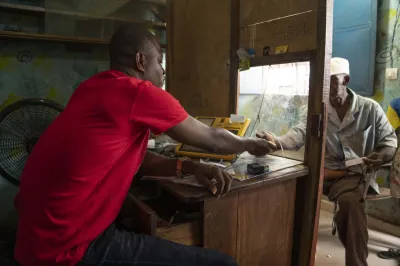A History Lesson for Advancing Interoperability in Mobile Money
CGAP commissioned Carol Benson and Scott Loftesness of Glenbrook Partners to glean lessons from more developed payments markets, like the United States and Japan, that could be relevant for interoperability questions in global branchless banking markets.
We developed the following set of four hypotheses that correspond to the kinds of questions a number of us have been asking with respect to interoperability in mobile money:
(1) Payments systems participants agree to voluntary interoperability for economic gains (however, the financial drivers in any specific scenario often relate to larger business objectives of the participants, and not just the costs and revenues related to the payments transactions);
(2) Public entities (including industry associations or councils) can foster rapid voluntary interoperability, particularly when encouraged by regulatory bodies;
(3) Government commitments to make payments on a new system can foster interoperability;
(4) Early dominance by one provider can slow or stop interoperability.

Photo Credit: Md. Huzzatul Mursalin
In the report, Interoperability in Electronic Payments, Benson and Loftesness looked at select and noteworthy historical examples to see if they proved or disproved the hypotheses. They paint a picture of how conditions developed over time based in part on their own first hand experiences, which makes the report full of interesting insights.
For example, the interconnection between Citibank’s proprietary ATM network and the NYCE network in 1994, some 17 years after Citi first launched ATMs, provides a sobering perspective on how long it takes for broader business considerations finally align for providers to voluntarily interconnect.
In another story, Bank of America’s approach to franchise its BankAmericard to banks outside California in the 1950s, done in response to regulation that prohibited a bank from operating outside its home state, set the conditions for VISA to emerge. In retrospect, Bank of America’s decision paid off economically. As recent as 2011, Bank of America was one of the country’s top three card issuers with a notable share of the revenue coming from card services.
A lack of interoperability in Japan’s stored-value system is a cautionary tale on early dominance. In this case, early technological dominance of the FeliCa technology – a chip card operating system created by Sony – thwarted interoperability in the long run.
Benson and Loftesness also provide their own perspectives on the different types of interoperability (scheme, network or parallel system interoperability) that could emerge with respect to M-PESA in Kenya. Given the early dominance of M-PESA, the report suggests that, it is unlikely if interoperability will emerge without regulatory intervention.
You can download the full report here.
------- The author leads the workstream on interoperability and is part of the Technology Enabled Business Model Innovation Program at CGAP.




Add new comment